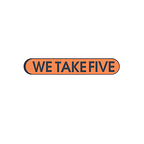We Zone Out: Sleeping Disorders
“Having narcolepsy isn’t all terrible… Just last week I dozed off at the dentist while having two teeth extracted”
I used to have a desk job, one that required long days of tedious and exacting editing. It wasn’t the best job for someone with narcolepsy. I dozed off pretty regularly, and most employers frown on that!
However, I had some strategies for staying awake: a sit-stand desk with a bouncy exercise ball instead of a chair, headphones with dance music, and regular breaks to take short walks. You might think it’s hard to fall asleep on a bouncy ball, but I managed. Sometimes in the afternoon, I’d walk to the ladies room to splash water on my face. Often, there would be a visible imprint of my keyboard across my forehead from resting my face on the desk.
Having narcolepsy isn’t all terrible, though. I have learned, over the years, that if I am well rested in general, I can often fall asleep very easily, even in stressful or painful circumstances — like on a plane or having my legs waxed. Just last week I dozed off at the dentist while having two teeth extracted.
As Roza described in an earlier post, “zoning out” can be an important way to maintain balance and improve focus and productivity. For those of us who are chronically tired, however, with young children at home, or sleep disorders, zoning out has its own set of risks and rewards.
I don’t have any young ones at home, but I do have both narcolepsy and delayed sleep phase disorder (think having massive jet lag, all the time). The two disorders share some symptoms, such as excessive daytime sleepiness and insomnia, that disrupt my life in various ways. Sounds like a paradox, right? Excessive sleepiness and insomnia? Which is it? The problem is that they work together to make it difficult to get restful sleep or maintain a regular schedule. Also, they are neither predictable nor easy to control.
The Risks
Obviously, it is risky to do any kind of desk-based relaxation work when you are already prone to falling asleep at your desk. I need to carefully pair relaxation efforts with time spent getting up and moving around in order to stay awake, or I need to plan for a short nap before or afterwards. The combination of the two things — controlled zoning out and moving around — works better for me than either one alone, and the pairing of movement with relaxation is very effective at helping me focus on my work.
The Rewards
In order for me to claim a bit of control over my situation and relax on cue I need to structure my schedule in a particular way. I’ve found that with brief five-minute breaks built into my day, I can pace myself better knowing that I’ll have a chance to “zone out” for five minutes coming up soon.
Many people with similar sleep disorders get good results with various combinations of medications to help them sleep and/or keep them awake, although many of us continue to have difficulty working at desk jobs that require focus and concentration. I have found that zoning out now and then in a deliberate and controlled way — the way we do in a WE TAKE FIVE session three times a day — helps me quite a lot if I’m careful not to get, you know, too relaxed.
Written by Nora Streed.
Join Nora and many others for a 5-day challenge next week!
Commit to do a 5-minute mindful movement session at least once a day with WE TAKE FIVE. Those who complete all 5 days all five days get a chance to win some awesome wellness treats (free yoga class, custom art, Reiki and stretching sessions, and more) provided by our partners.
JOIN NOW!
wetakefive.com | LinkedIn | Instagram | Facebook | TikTok
All information shared via wetalkfive.medium.com is subject to the Terms of Service
